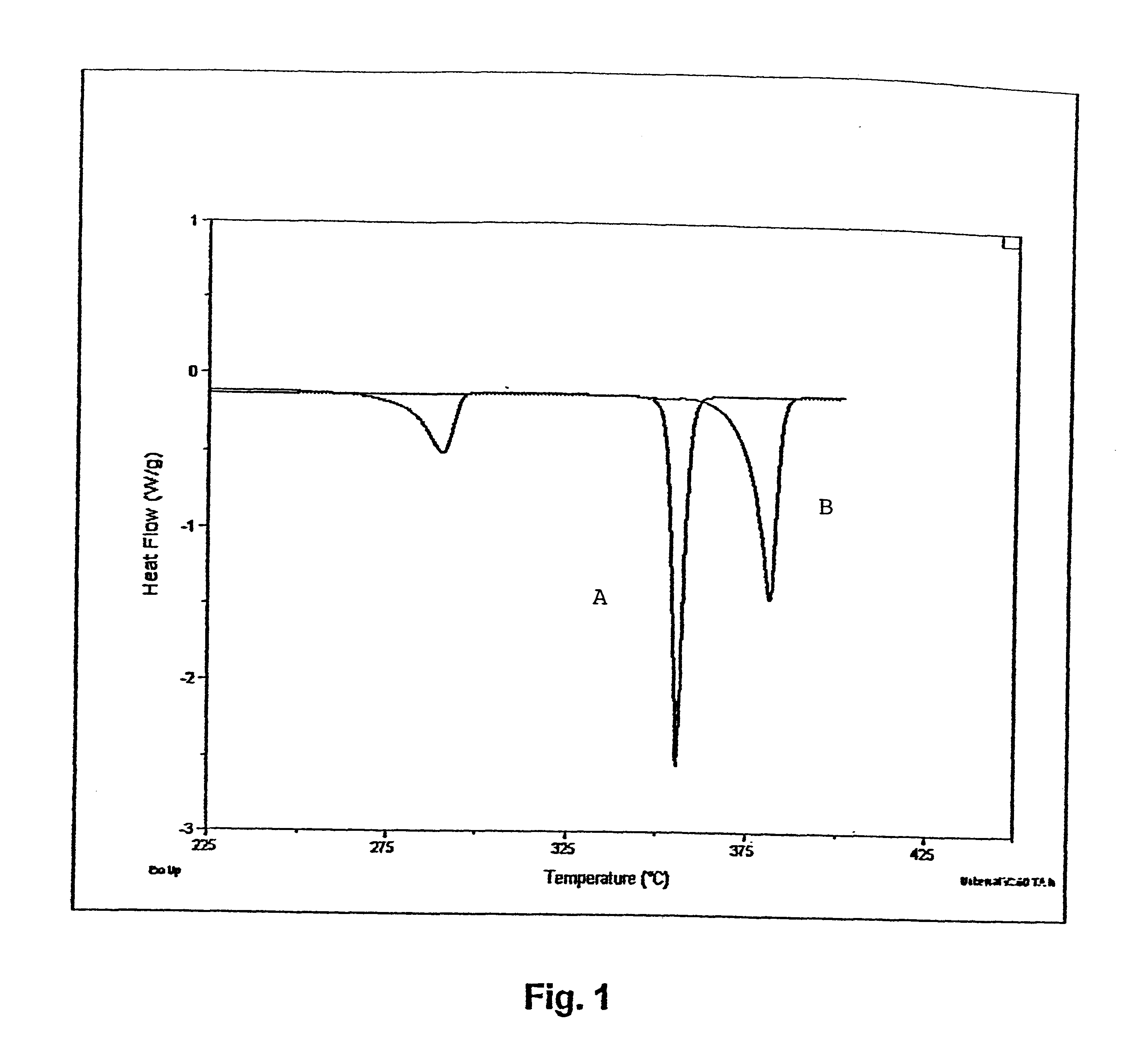Poly(bromoaryl)alkane additives and methods for their preparation and use
- Summary
- Abstract
- Description
- Claims
- Application Information
AI Technical Summary
Benefits of technology
Problems solved by technology
Method used
Image
Examples
example 2
Photobromination of decabromodiphenylethane to Dodecabromodiphenylethane in Chlorobenzene Solvent
A 500 mL, 4-necked flask was equipped with all the desired accessories almost identical to what was used in the above Example 1. The reactor was charged with chlorobenzene(300 mL, 330 g) in which 0.7 g (4.375 mmol) of bromine had been pre-weighed. Decabromodiphenylethane wet cake (10.0 g, 10.3 mmol) was now added and the slurry was stirred and heated to reflux under nitrogen. The 0.7 g (4.375 mmol) bromine contained in the solvent was sufficient to convert 2.1 g decabromodiphenylethane (21% of the total 10 g charged initially) completely to dodecabromodiphenylethane. Since the solubility of decabromodiphenylethane in refluxing chlorobenzene is about 0.9 weight percent, approximately 2.97 g of the material is expected to be in solution, which is more than required for the reaction to occur. When the reflux was achieved (133.degree. C.), the light source was turned on. Within about ten min...
PUM
| Property | Measurement | Unit |
|---|---|---|
| Weight | aaaaa | aaaaa |
Abstract
Description
Claims
Application Information
 Login to View More
Login to View More - R&D
- Intellectual Property
- Life Sciences
- Materials
- Tech Scout
- Unparalleled Data Quality
- Higher Quality Content
- 60% Fewer Hallucinations
Browse by: Latest US Patents, China's latest patents, Technical Efficacy Thesaurus, Application Domain, Technology Topic, Popular Technical Reports.
© 2025 PatSnap. All rights reserved.Legal|Privacy policy|Modern Slavery Act Transparency Statement|Sitemap|About US| Contact US: help@patsnap.com

